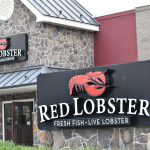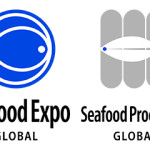Norway-headquartered salmon farming group Marine Harvest has revealed plans to introduce fully-enclosed salmon pens at a number of its Norwegian sites as means of reducing the impact of a growing sea lice problem.
Because the Norwegian salmon farming industry is now spending more than NOK 3 billion (EUR 315 million; USD 350.4 million) per year on sea lice challenges alone, the country’s government has incentivized companies to develop new technology that solves issues around sea lice and escaped fish, as well as removing waste particles and potential feed spills from farming operations. In return, those companies can apply for additional farming licenses.
Marine Harvest has applied for 14 licenses for its new salmon farming solution, dubbed “the egg,” which uses new enclosed technology, announced CEO Alf-Helge Aarskog during his presentation of the company’s fourth-quarter 2015 results.
Aarskog said it’s “still very early days” for the concept, but it appeared it could have “a lot of advantages compared to today’s farming” if Marine Harvest could get it to work the way it wants in terms of fish logistics, and reducing sea lice and fish escapes.
The producer would also look to remove the waste particles from the concept’s operations and use it for energy production, he said.
“Hopefully, if we get our licenses approved, we will start up this fall and then take it from there gradually. Our target is to have one site able to harvest out between 14,000 and 15,000 metric tons (MT) and at a good cost to prove the concept and with no impact on the environment.
“Cost-wise, we will not do this if we can’t decrease the cost of production. And when we know that the Norwegian farming industry is using NOK 3-5 billion just on sea lice, in addition to a lot of costs related to mortality, we think it can be a solution.”
While pleased with Marine Harvest’s salmon of Norwegian origin achieving an operational earnings before interest and taxes (EBIT) of NOK 12.14 (EUR 1.26; USD 1.41) per kg in Q4 2015, a figure that was down marginally from NOK 12.59 (EUR 1.31; USD 1.46) a year previously, Aarskog revealed he’s concerned by the increased cost of production, especially in the areas where the company has had a “real issue” with sea lice.
In 2015, there had been different scenarios in its different Norwegian farming areas, he said, but culminated with a lot of costs going into tackling the sea lice problem.
While Marine Harvest’s operations in the north of Norway fared better against sea lice challenges in 2015 than they had in each of the five years previously, its mid-Norway farming region “lost control” to the parasite, he said.
Overall, the health cost per kg salmon harvested by its Norwegian operations in Q4 2015 was more than twice as high as the cost in the corresponding quarter in 2014. The estimated exceptional cost related to its sea lice mitigation and losses amounted to NOK 224 million (EUR 23.5 million; USD 26.2 million) in Q4 2015, compared with NOK 117 million (EUR 12.3 million; USD 13.7) in Q4 2014. Per kg harvested, exceptional sea lice mitigation costs amounted to NOK 3.36 (EUR 0.35; USD 0.39) in the last quarter, compared to NOK 1.67 (EUR 0.18; USD 0.20) a year previously.
“In the last few months, there have been heavy investments in new equipment to help the situation for 2016, but it’s still not over. This has to be taken seriously,” said Aarskog.






